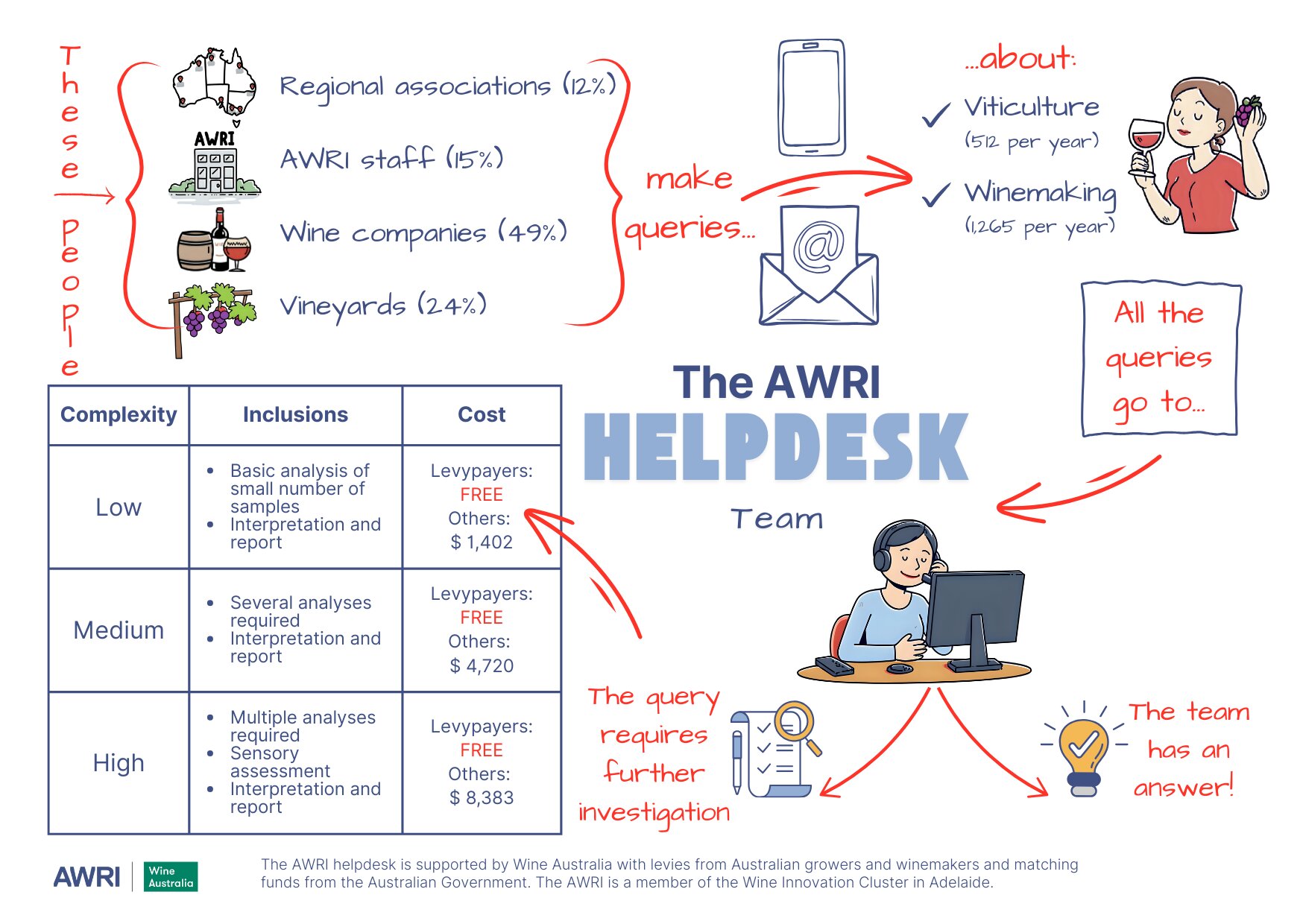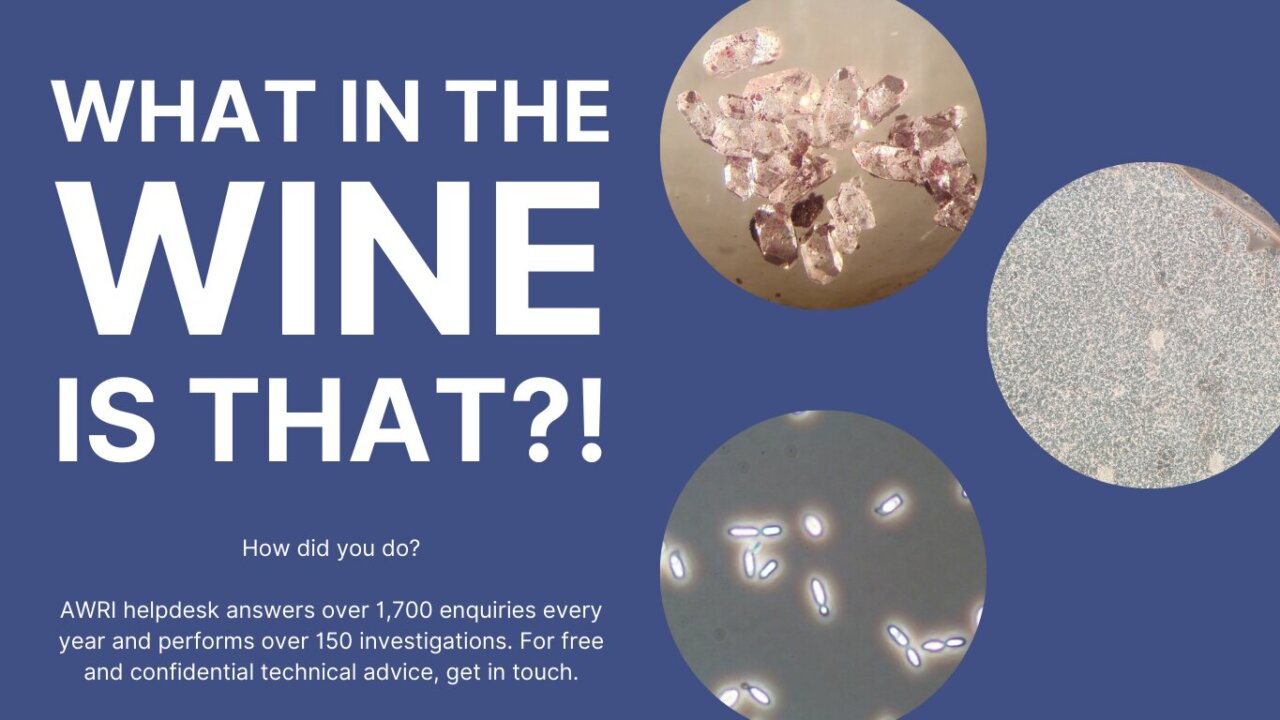Contact the helpdesk
Email: helpdesk@awri.com.au
Phone: 08 8313 0066
Quiz answers

Quercetin dihydrate
Quercetin dihydrate is one of the flavonol compounds which are natural components of grape skins and leaves. Quercetin glycosides are extracted from the grape skins during fermentation, then hydrolyse in the acidic wine conditions to release free quercetin. Free quercetin is insoluble in wine, and will crystallise forming a deposit. The identification of a quercetin deposit can be confirmed by the AWRI helpdesk through the use of IR spectroscopy.
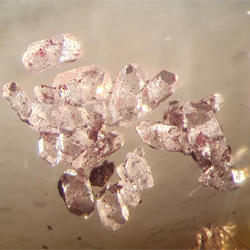
Calcium tartrate
The occurrence of calcium L-tartrate deposits is a most insidious problem in bottled wines because the crystals are slow to form and usually do not come out of solution for some time, often months, after bottling. Deposits of calcium tartrate usually appear as colourless or white, bipyramidal or rhomboid crystals. In some cases co-deposits are also present, eg phenolic and protein material, quercetin crystals, or yeast cells. The identification of a calcium tartrate deposit can be confirmed by the AWRI helpdesk through the use of IR spectroscopy.
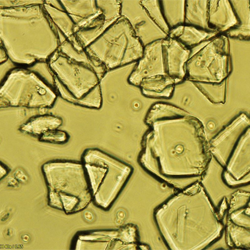
Potassium Hydrogen Tartrate (KHT)
The most common physical instability in bottled wine observed by the AWRI’s helpdesk is the precipitation of the potassium salt of tartaric acid, potassium hydrogen tartrate (also known as potassium bitartrate or KHT), which is generally associated with inadequate cold stabilisation of wines. The identification of a KHT deposit can be confirmed by the AWRI helpdesk through the use of IR spectroscopy.
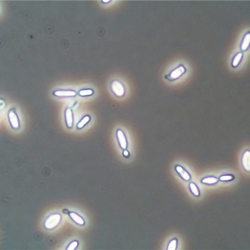
Brettanomyces
Helpdesk queries received in the last year – 39
Brettanomyces (Brett) is a type of yeast commonly found in wineries, which has the potential to cause significant spoilage in wines, through the production of volatile phenol compounds. These compounds (in particular 4-ethylphenol [4-EP], 4-ethylguaiacol [4-EG] and 4-ethylcatechol [4-EC]) are associated with undesirable sensory characters such as ‘Band-Aid’, ‘medicinal’, ‘horsey’, and ‘barnyard’. The AWRI helpdesk quite often receives wine samples suspected of being affected by Brett, yet sensory and chemical analysis reveals the wine to be ‘Brett’-free. ‘Brett’ is sometimes being blamed for other wine faults – including sulfidic characters (‘sewerage’, ‘sweaty’, ‘rotting onions’), low levels of oxidation that reduce fruit intensity and add a ‘savoury’ note and smoke taint.
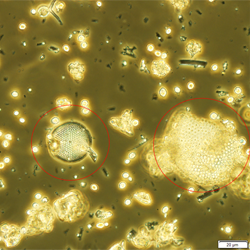
Diatomaceous earth
Diatomaceous earth is frequently used as a winemaking filter aid, and therefore fragments of this material are occasionally found in finished wines. The ‘honeycomb-like’ appearance of diatomaceous earth is very characteristic, making deposits of this material easy to identify when viewed under a microscope.
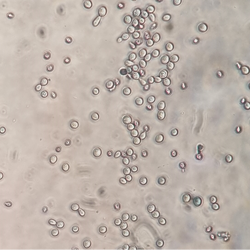
Saccharomyces cerevisiae
Saccharomyces sp. can be a problem in bottled wine containing residual sugar, where even a small number of cells in a bottle can referment, causing cloudiness and a yeasty aroma and flavour. The AWRI helpdesk can verify the presence of yeast by microscopy, and can detect evidence of refermentation using chemical analysis.
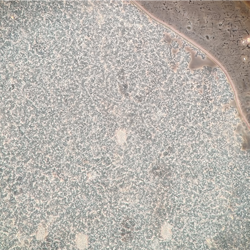
Biofilm
Biofilms are formed when one or different types of microorganisms first attach to surfaces and then grow, multiply and produce extracellular components (polysaccharides, exopolymer coatings) which form protective gel-like films or slimy layers that protect cells underneath from sanitising agents. Before a surface can be effectively sanitised, these films must first be removed with cleaning operations such as scrubbing, brushing or high-pressure treatments. The identification of a biofilm deposit can be confirmed by the AWRI helpdesk using IR spectroscopy and microscopic analysis.
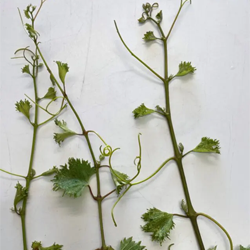
2,4-D drift
Grapevines are sensitive to phenoxy herbicides such as 2,4-D. Exposure can lead to adverse effects on yield, vegetative growth, vine health and overall fruit quality. Typically, symptoms of 2,4-D exposure in grapevines are first noted as distorted leaf tissue (Figure 1); observed mostly in young developing leaves. Other symptoms include tendril necrosis, zig-zag shoots and curled leaves. For further information about spray drift or any other grape and wine technical issues, please contact the AWRI helpdesk.
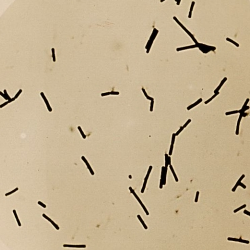
Lactobacillus
John Fornachon, the AWRI’s inaugural Managing Director, launched his wine research career by investigating spoilage issues affecting fortified Australian wines exported to the UK. John took this remarkable photograph at the AWRI in 1938. For more information about lactic acid bacteria and the potential problems they can cause, refer to the resources listed below.
Fun facts about the AWRI helpdesk
